Dozie Kanu’s Architectural “Soul Spill” Is Open to Interpretation
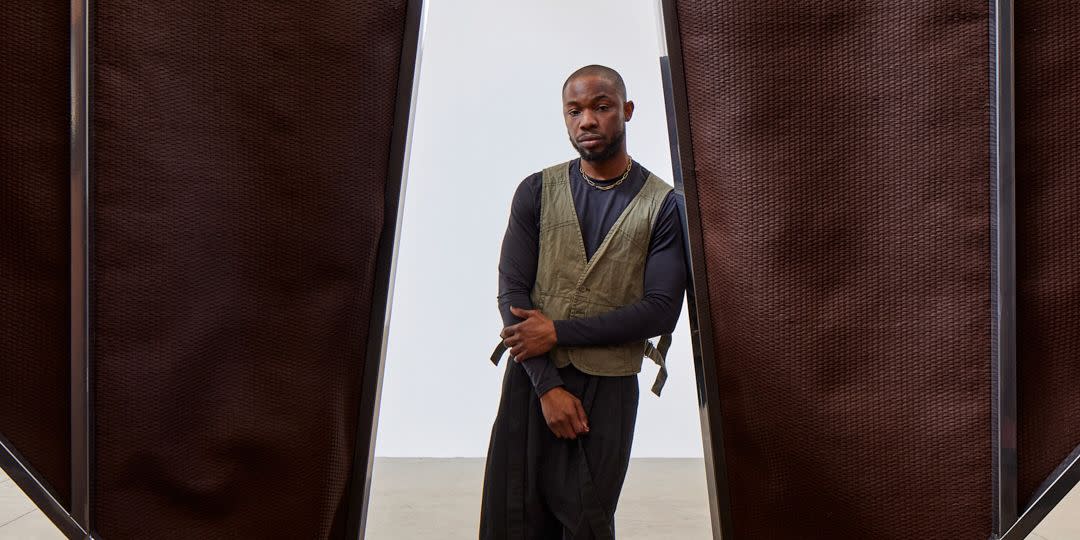
Bringing form to memory; blurring the lines between disciplines; manifesting the collective alongside the individual: All of these principles are at the heart of the practice of artist Dozie Kanu, a 30-year-old Houston native whose parents hail from Nigeria.
Kanu, who is now based in Portugal, studied at the School of Visual Arts in New York City and has had solo exhibitions at Performance Space New York and the Studio Museum in Harlem. His work interrogates comfort—and, by turns, its trajectory toward complacency—through objecthood, presenting a cacophony of found and sourced materials in configurations that feel familiar yet jarringly out of place. That is, perhaps, the point: to make the viewer question what it means to belong, what it feels like to be a part of the world.
With support from luxury perfumer Byredo, Kanu has mounted his first architecturally scaled installation for this year’s Salone del Mobile. The work, called Bal d’Afrique by Dozie Kanu (named for one of the fragrance house’s most popular scents), is a monumental, pavilionlike structure made from steel, glass, and aluminum. As visitors meander through its “rooms,” they encounter four years’ worth of Kanu’s work, including sculptures created specially for the exhibition.
The fragrance-divined installation is accompanied by a text from Adjoa Armah, founder of Saman Archive, and preceded by a vitrine populated with various found photographs from the collection, showcasing ceremonies and celebrations and general finery. It orients the viewer around the idea of preservation, and how we hold onto who we are, have been, and will be. To that end, we spoke with Kanu and Byredo founder Ben Gorham about perception, context, and what makes a fragrance memorable.
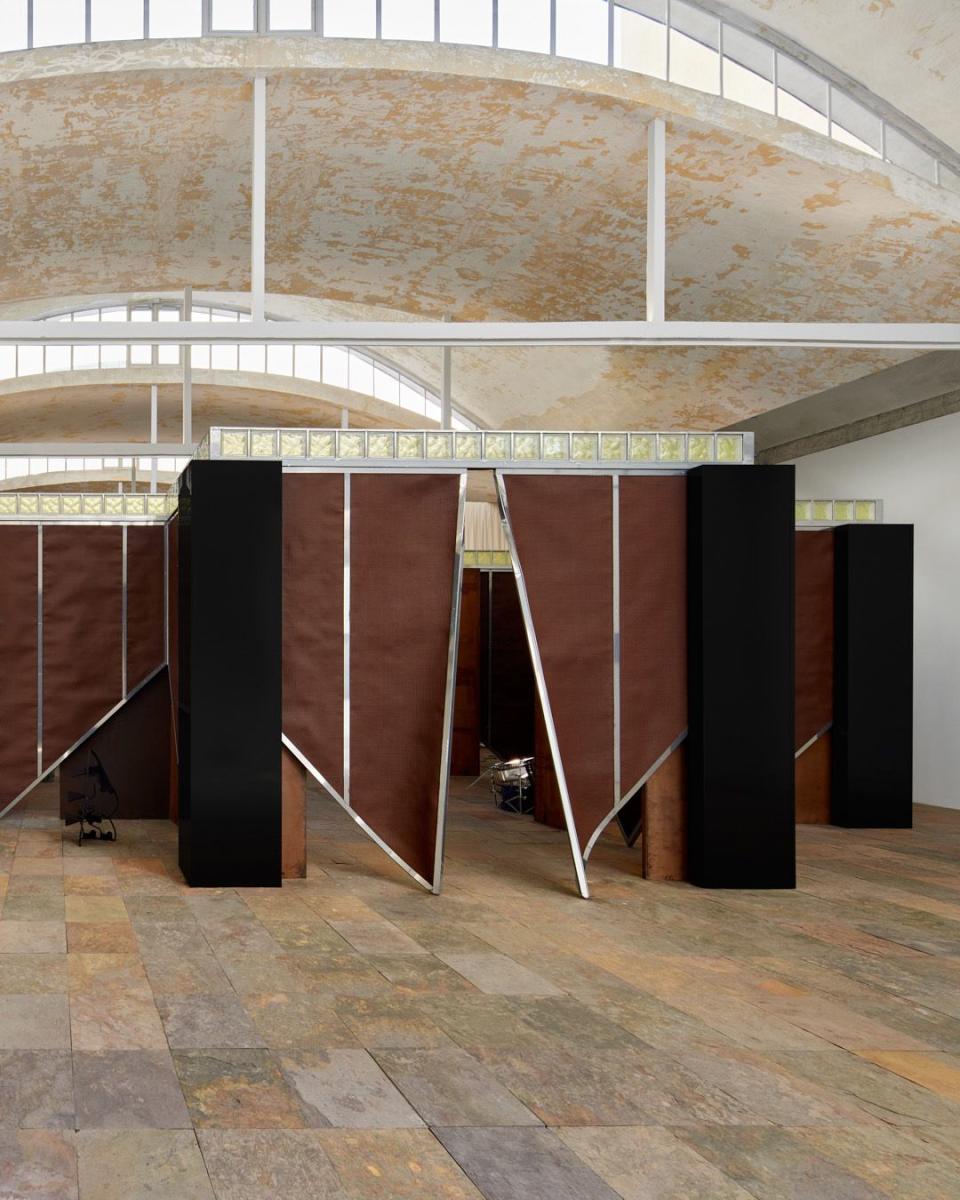
ELLE DECOR: This installation grapples directly with Western subjectivity, so I’m curious how you hope this work gets visitors, consumers, or Westerners writ large to think more critically about their default worldview?
Dozie Kanu: I think [within the work] there’s an acknowledgement of invisible energies that’s more in line with the way that my parents view spirituality, and just being in general, that is absent from Western culture right now. But it is very present in the Western culture that I grew up in, so there’s this clash that’s happening. I’m hoping to build a bridge and blur the lines between these two ways of being.
If you think about African sculpture, or what’s deemed African sculpture, it could also be called African design. These are things that were made to function in these communities in a specific kind of way, but once they’re removed from those contexts, then it’s all of a sudden a sculpture. That’s what I’m hoping to try to resolve. It’s like, design can be sculpture. Sculpture can be design. Architecture can be installation.
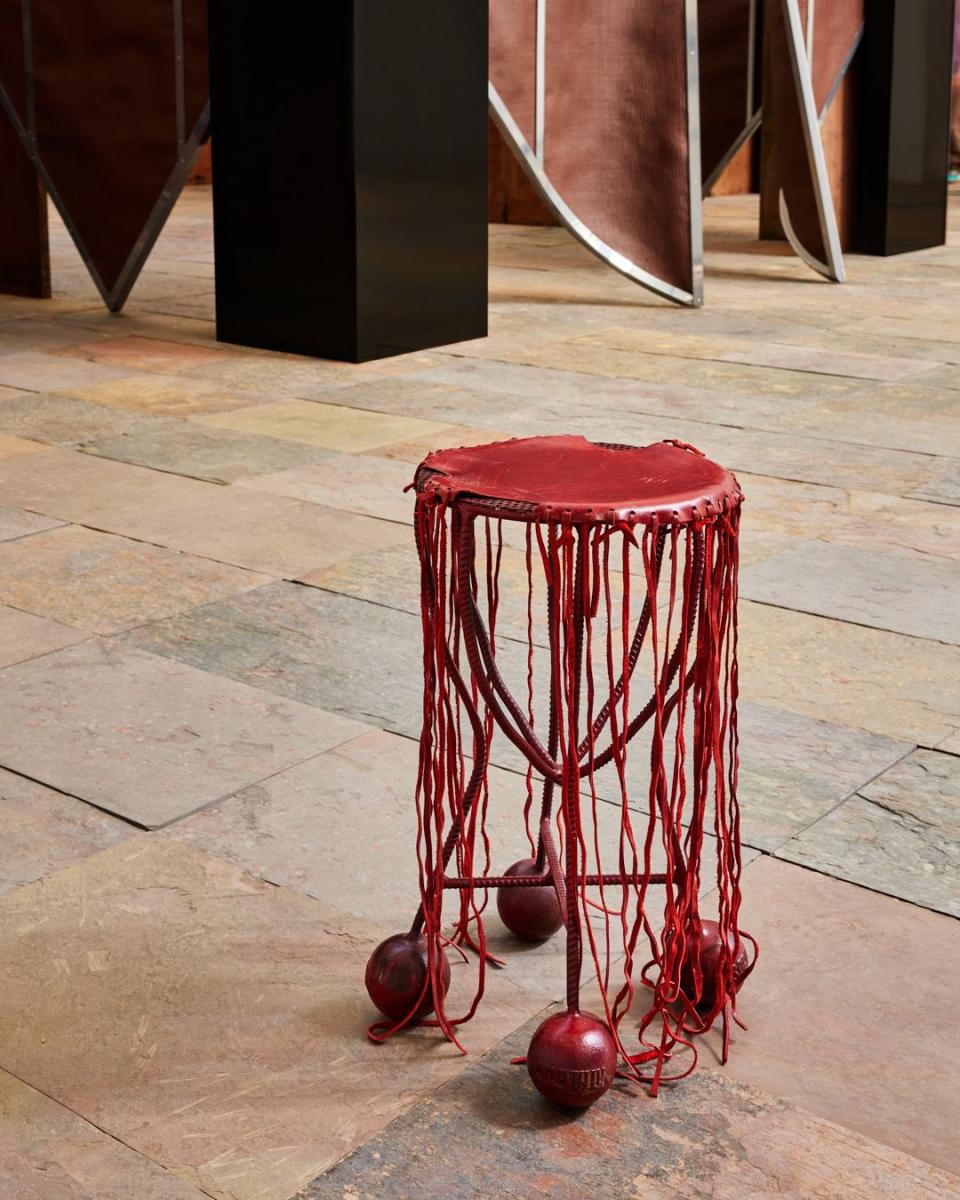
Ben Gorham: Some of these conversations we had in regards to that Western perspective is that there are a lot of stereotypes toward Africa as a whole, and even India, where my family’s from. A lot of it comes from a colonial gaze. I think to be able to dig deep and to be able to tell these stories through the eyes of an artist or through a community in Milan during design week is an opportunity to tell a very authentic story.
ED: What was it like for you, Ben, to collaborate with an artist around this installation, through the medium of design?
BG: In this project, it really is about giving Dozie the freedom to express himself. And I think even the framework—it’s just basically telling the story of Bal d’Afrique, how it came to life and what it meant to me. And then, more importantly, what it means to him and how it relates to his heritage and to his life. It was surprisingly easy, but that has to do also with Dozie as a person and as an artist, being really empathic.
ED: If one goal of the exhibition is to move away from the individual and toward the collective, then how does this structure enable that kind of experience? Does it function as a building? A large sculpture?
DK: It’s an idea that’s housing a lot of different ideas. I sometimes get really worried about labeling what a work is because I kind of just want to leave things be. That’s what fragrances do, they linger and people have different feelings toward them. And that’s kind of how I want my work to operate. I don’t want there to be such a prescribed meaning or a prescribed way to view this.
ED: So it actually is very much about the individual perception in the end.
BG: It’s immersive in so many different ways, and I think when you [Dozie] were starting to manifest this, it was the subjectivity of in and out, and object and material, and how these things come together. It isn’t one thing.
DK: Yeah, I don’t think it’s collective or individual. It’s both happening at the same time. I kind of see this [installation] as a way of maximizing my potential, which in a way can benefit someone else maximizing their potential.
When I think about the people that came before me, I think about the opportunities that they didn’t have that I now have. In a way you don’t want to let the people that came before you down. It’s like, what can I do with this? And this is an ongoing thing. I see a lot of what I do as a whole. That’s why it’s so interesting to bring old work into the fold, to see works that I wasn’t thinking about and then bringing them together [in this context] and seeing how they are actually working through some similar things.
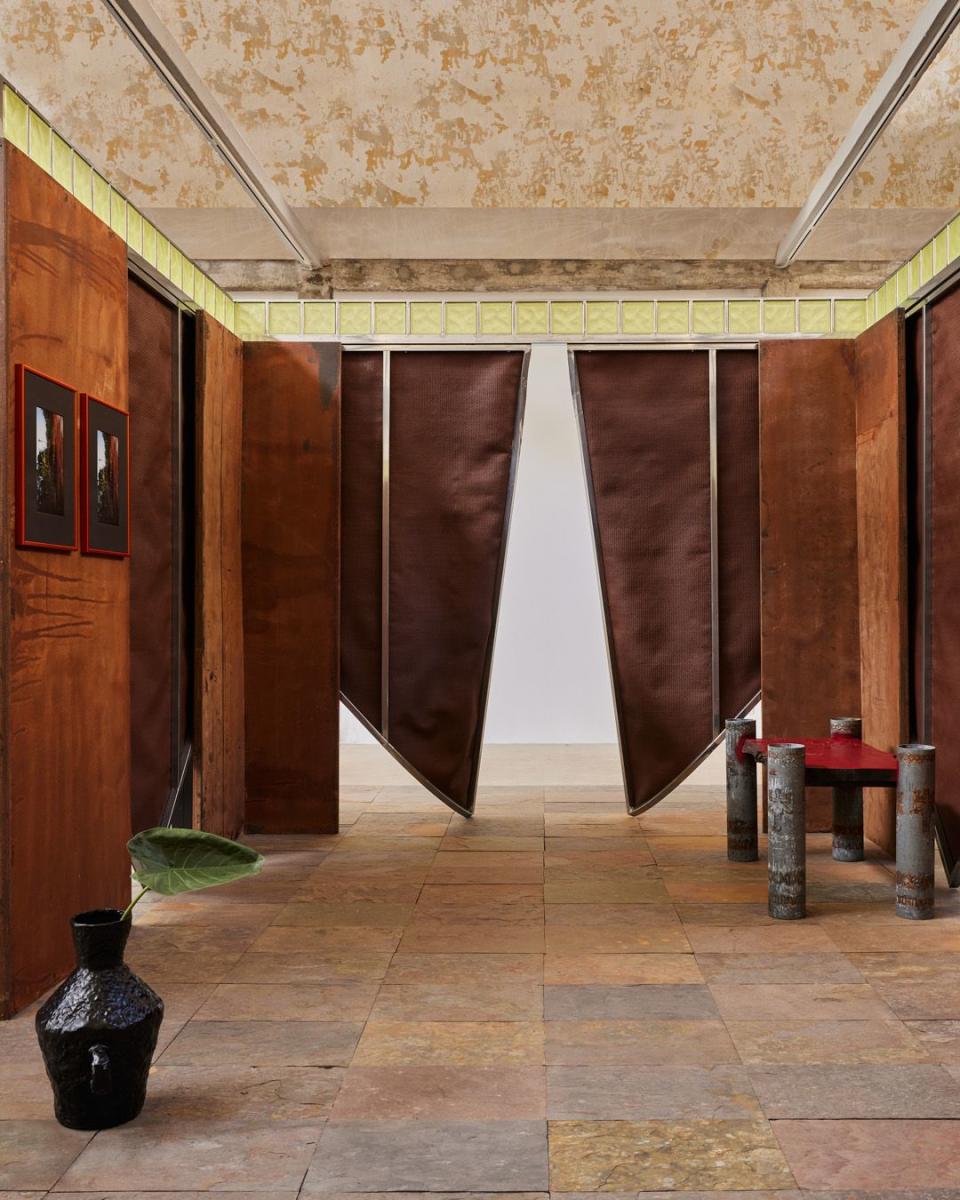
ED: The fragrance itself is very much about celebration and joy and all of these kinds of feelings. How do you see the installation referencing that?
DK: Maybe the scale of it. It kind of feels like a ceremony could take place in it, like a wedding. A celebratory moment could happen inside of it. Even the golden crown around it, like a crowning ceremony. But I don’t really want to tag too much direct meaning or direct intention, because I work from a very visceral place. Some of the conceptualizing often happens after I’m just looking at the finished product. I just can’t get bogged down by the concepts too much because it’s like soul spill.
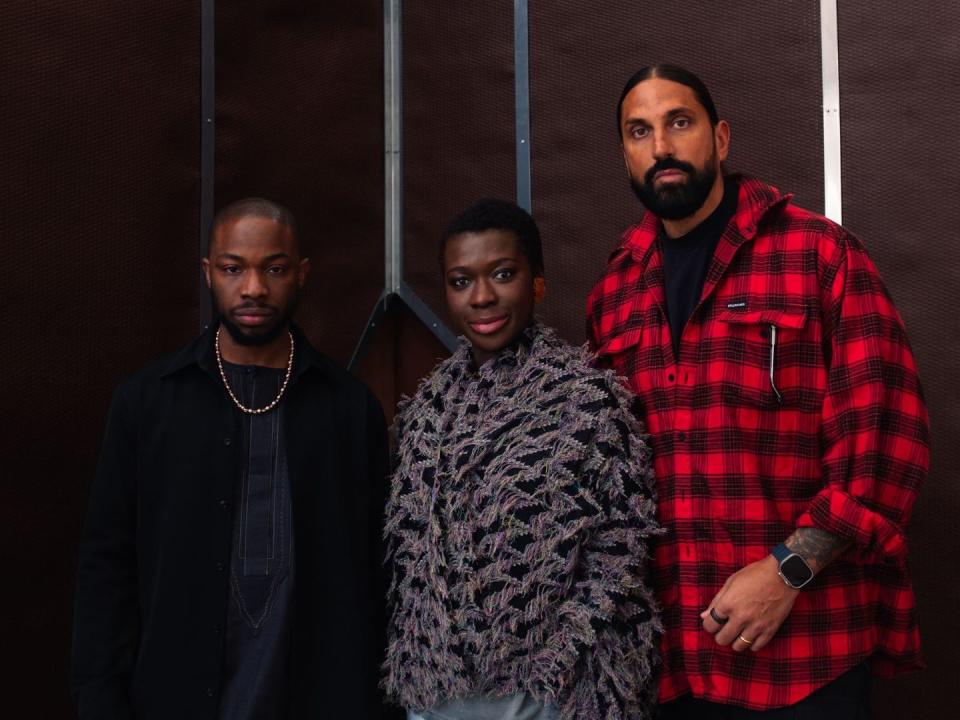
ED: So would you say it doesn’t necessarily matter if the person viewing understands your intention or thinking behind it?
DK: Not at all. If I confuse you, then I feel like I won.
ED: Ben, what is your relationship with this fragrance and how has that evolved in the years since its launch?
BG: It was connected to a very specific memory and to a very personal idea. I play this whisper game with my kids, and the word you whisper comes out something else as it goes around the table. Memories are very much like that. And I think the meaning of this fragrance has become very much that for me. It’s something that’s evolved over a long period of time. And then every person and every story and any project that taps into this collective memory also alter its meaning—it becomes part of this collective.
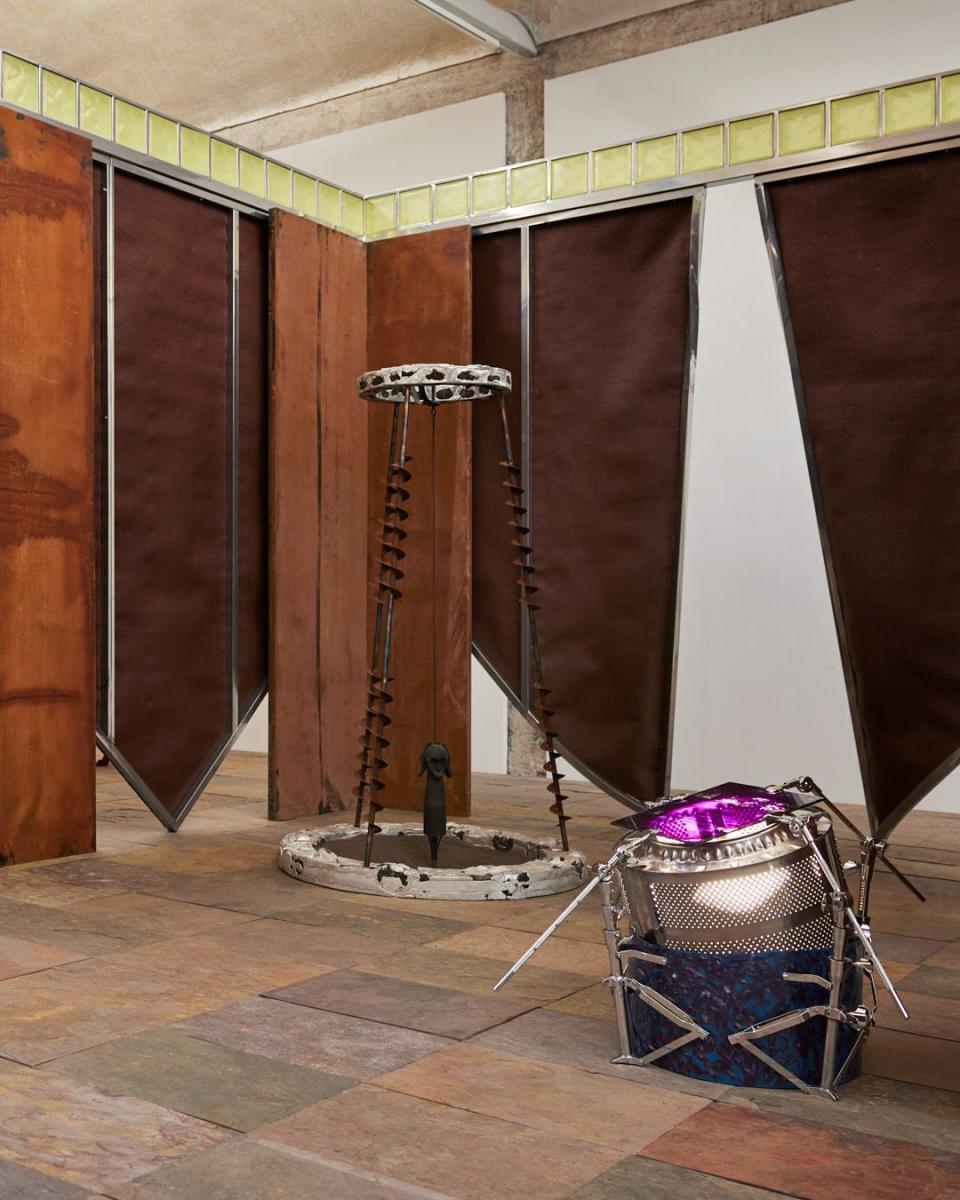
ED: So it’s back to the individual, who has their experience, and when it’s shared it becomes this thing that you just tap into and take away what you will.
BG: For sure. And oddly enough, it’s become a very lucrative commercial practice because people attach to things emotionally, and they make it theirs. That’s what’s allowed us to do this for so long, is that people truly make [the memory] their own.
ED: Do you hope that this project pushes you further into these architecture-scale works?
DK: This is just a little taste of what I’m capable of within the space of architecture. I hope that’s what people can see. Like I said, I’m about maximizing potential. I could go bigger. I could go more complex. And yeah, I’m shamelessly ambitious—but not for ambition’s sake. I’m just hoping that this energy has the ability to get people to realize what they’re capable of, too.
You Might Also Like

